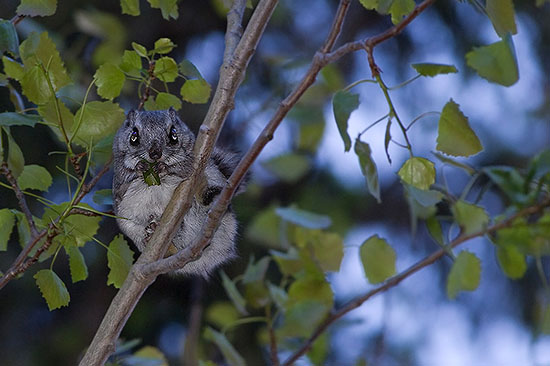In 2007, during the midnight summer period, Erika and I spent 9 days in Central Finland. Main target was to observe some of our mythical Boreal birds, such as Great Grey Owl and Capercaillie, as well as Brown Bears and much more interesting species. Despite the fact that one is supposed to relax during holidays, it became a pretty intense trip with almost no sleep, but with plenty of birding and mammal highlights as well as beautiful remote landscapes in superb midnight summer settings. Our trip was pretty short and the chance of finding by ourselves most of the Owls in such a short time was really low. Despite not being a huge fan of readymade birding trips with a high predictability, we then decided to use the help of local guides from Finnature for two days in Oulu and one in Kuusamo. We birded on our own on the other days of the trip, which proved to be a successful formula for a 9 days trip.
Our journey started on the first of June in Oulu, where with the help of our guide, we came across a pair of Northern Hawk Owls, Surnia ulula feeding their young. Under here an image from an adult and a young bird.
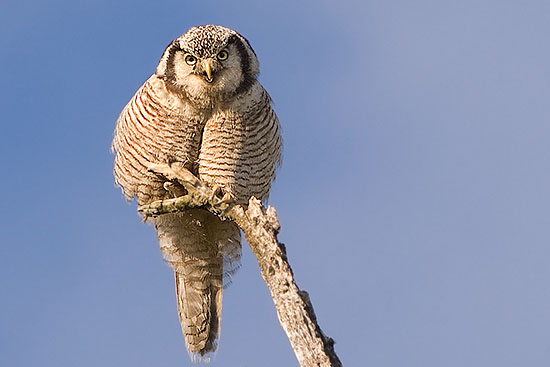

It was definitely a good Owl year, as later we ran on our own rather accidently two times into a pair of Hawk Owls. Maybe it is not the most common Owl in the area, but it’s obtrusive perching behaviour on top of the trees in open areas, make them relatively easy to find. In particular when they have a hungry offspring too feed and during a year with vole peak, where plenty of the individuals are raising young, it should be relatively easy to find them in the vast taiga forests.
Under here an image illustrating well the obtrusive perching behaviour of the species.
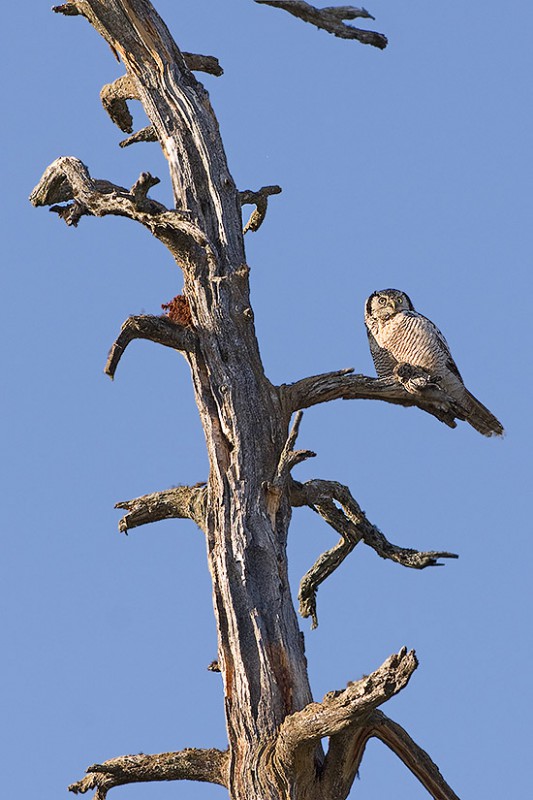
The next three species are little less easy to find, moreover most of the Ural Owl young seemed to have fledged by then and the birds seemed to have started to disperse. So we had two visit two sites and search a few hours around to find an adult. Under here an adult Ural Owl, Strix uralensis.

Luckily a day counts 24 hours and the sun only disappeared between 12:30 p.m. and 2 a.m. And even then, one could even have read the newspaper outside. Not that we read any newspapers, after all we had no time to waste ... And no, it’s also not because I cannot understand a Finnish-written newspaper.
But anyway, what I mean is that the day consists during that time of the year of plenty of birding time and yes, birding we did! The next stop brought us the holy grail of the Owls: the Great Grey Owl, Strix nebulosa. I expected the fellow to be impressive, but damn, he’s really huge, massive and what a fierce facial mask!
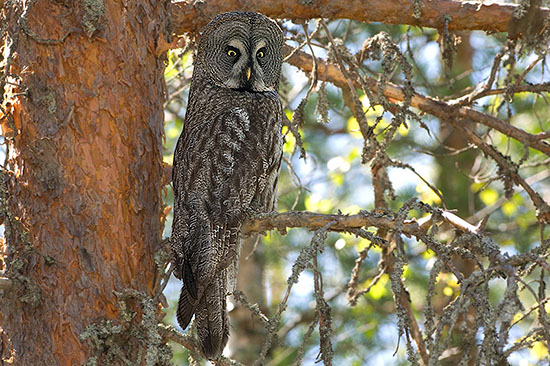
These Owls don’t build their own nest, neither do they add nesting material to old nests. They often pick out deserted bird of prey nests, their size worthy, in this case a huge Northern Hawk nest.
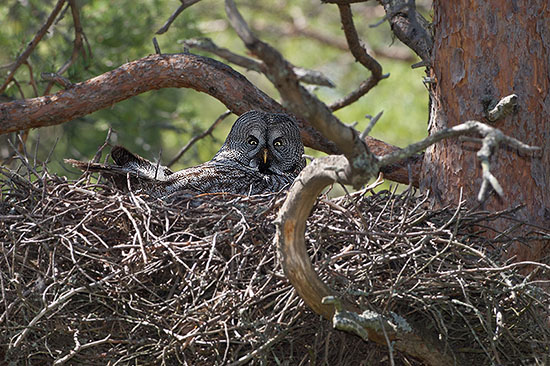
Our last Owl quest in the Oulu area started by a walk in a beautiful hilly area with old growth Norway spruce and Blueberry vegetation.
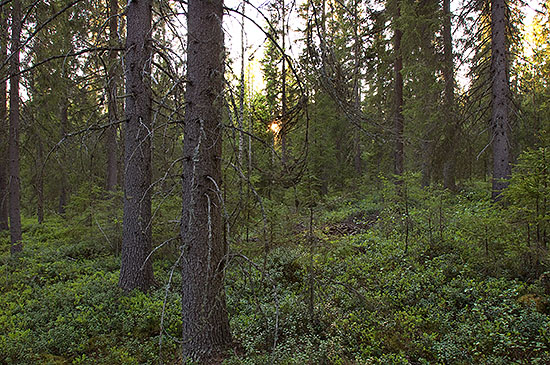
Despite having the diminutive size of a House Sparrow, the Eurasian Pygmy Owl, Glaucidium passerinum, is a ferocious predator. Capturing prey almost it’s size, such as a Boreal Tit is no exception at all and there are even records of Pygmy Owls who caught Thrushes, birds way bigger than itself! The Owl quickly showed up, but I really wanted to take some pictures of the bird with a prey to illustrate its size. As our guide wanted at least two hours of sleep, and as we have a weak heart for driving Finnish guides, we called it a day on the first day. In ended up with only one image of the bird peeping out of its nest, but I was going to give it a chance the next day.
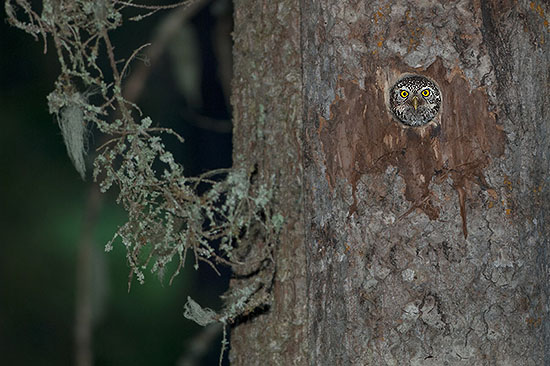
On the next day we started to bird around in the fields around Oulu.
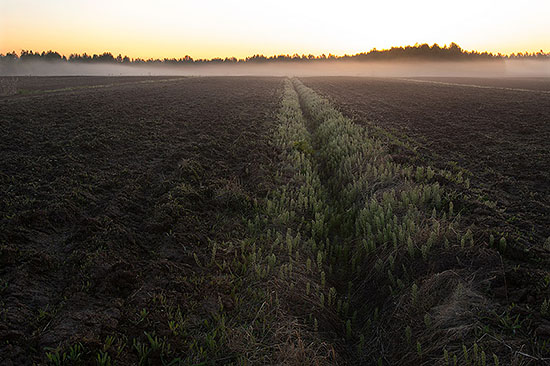
Ortolan Bunting, Emberiza hortulana a seriously declining species in Western Europe, which is by now extinct in Belgium, is still present in the area in viable populations. Under here an image of a singing male.
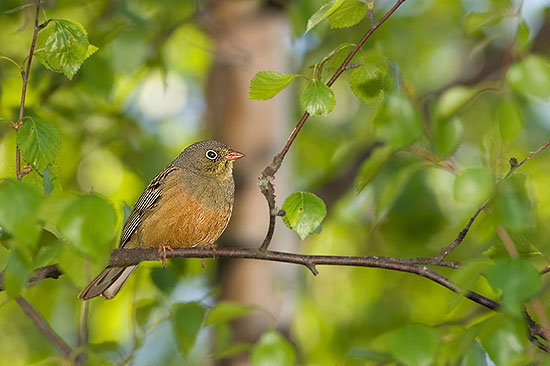
A little later, our guide stopped the car very shortly along a logging road, where a highly camouflaged female Capercaillie, Tetrao urogallus had its nest just next to the road. We soon drove away to avoid disturbing the bird. During the next days of our trip we regularly came across female Capercaillies, often close to the road. And, amazingly we bumped by accident into another female on a nest, when we were walking across a clear-cut area. It is obvious that this mythical turkey-sized forest bird is not uncommon at all in Central Finland.! But despite its huge size the bird often remains difficult to observe properly.
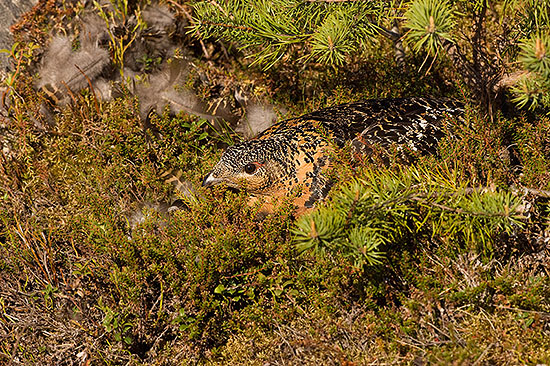
Along a patch of birch forest a male Three-toed Woodpecker, Picoides tridactylus, flew in to its nesting tree in an old Aspen.
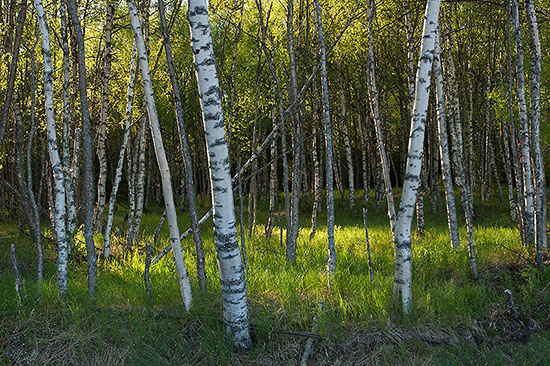
Again, another forest bird I really hoped to observe decently! Despite having a wide Palearctic distribution, the species is nowhere common and only occurs in low densities in Old Forest stands. With the exception of partially burned old-growth forest, where densities can peak up to 10 pairs per km², the species home range is often more than 100 ha and densities mostly range from 0·03 to 1·2 pairs per km².
On the same spot, Black, Greater Spotted and Lesser Spotted Woodpecker were present. Under here an image of our smallest European Woodpecker, Lesser Spotted Woodpecker, Dryobates minor.
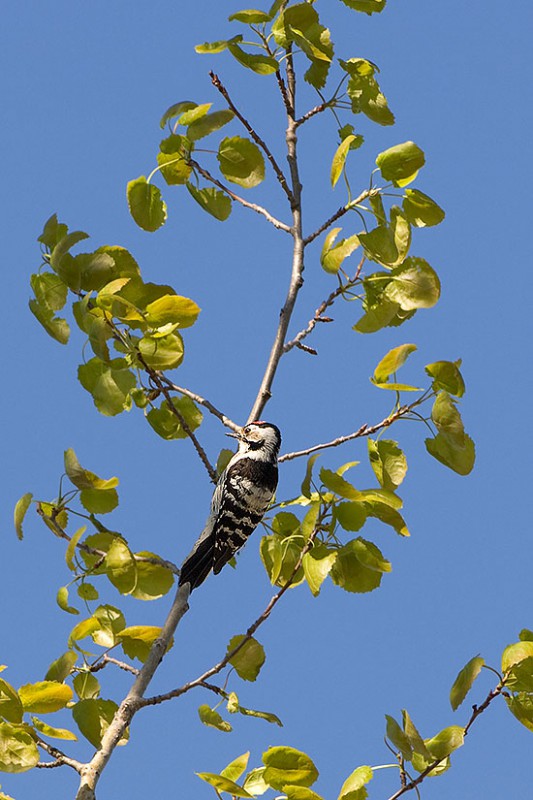
Under here, images from a female (first image) and a male (next two images) Three-toed Woodpecker.
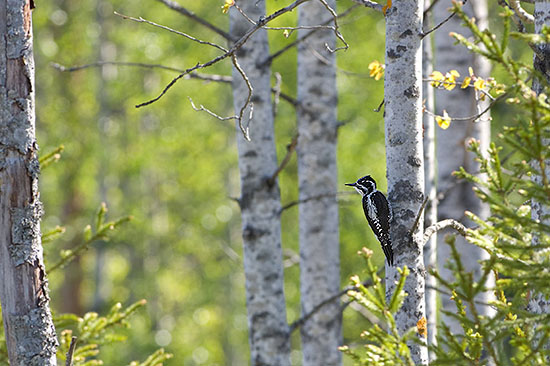
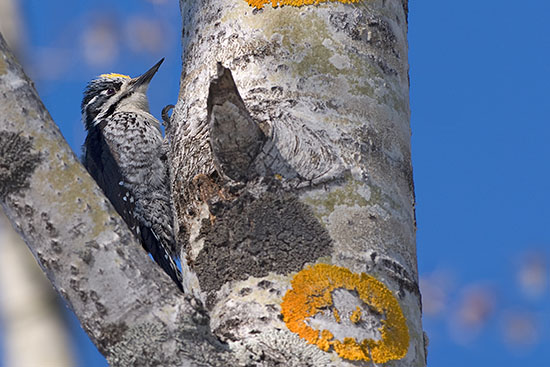
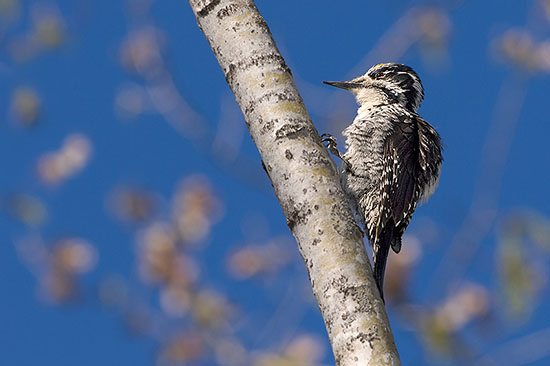
As planned, on our last evening in Oulu, we revisited the Pygmy Owl site. After an hour we witnessed the bird flying up from a branch and starting to hunt, but we soon lost him out of sight. We decided to be patient, and as there was still plenty of light it was still realistic to obtain the image that I really wanted. Moreover, the old forest stand was a very enjoyable place to experience fully the quietness of a vast boreal forest at the start of an evening concert of omnipresent birds such as Redwing and Willow warbler. After four hours we were rewarded with a male flying in with a vole. Finally I was able to take a few pictures in the beautiful evening light of the dark Spruce Forest. Here are the results.
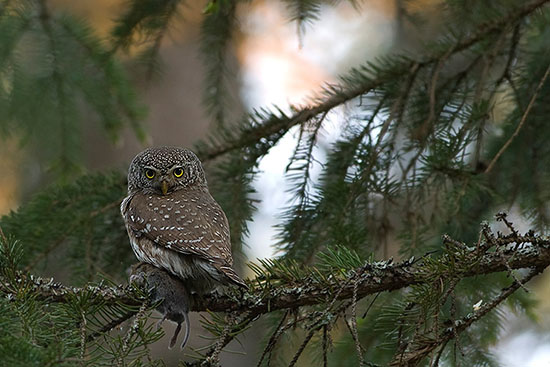
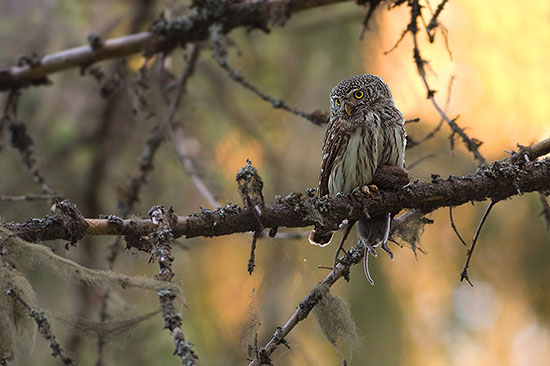
After two days with almost no sleep, we spent our night at the hotel during three hours and off we drove to the Vaala area. Despite the lack of sleep we didn’t feel too tired. Apparently the higher amount of sun or daylight seems to provide one with extra energy. We visited some large wetlands and small bogs inside the forest and I was prospecting an area with Red-throated Divers when I got an unexpected phone call from Eero Këmilä, that there was a small chance of seeing Siberian Flying Squirrel. We decided to give it a chance and this turned out into one of the highlights of the trip.
You can read more in a previous news item about our magical encounter with the Siberian Flying Squirrel.
